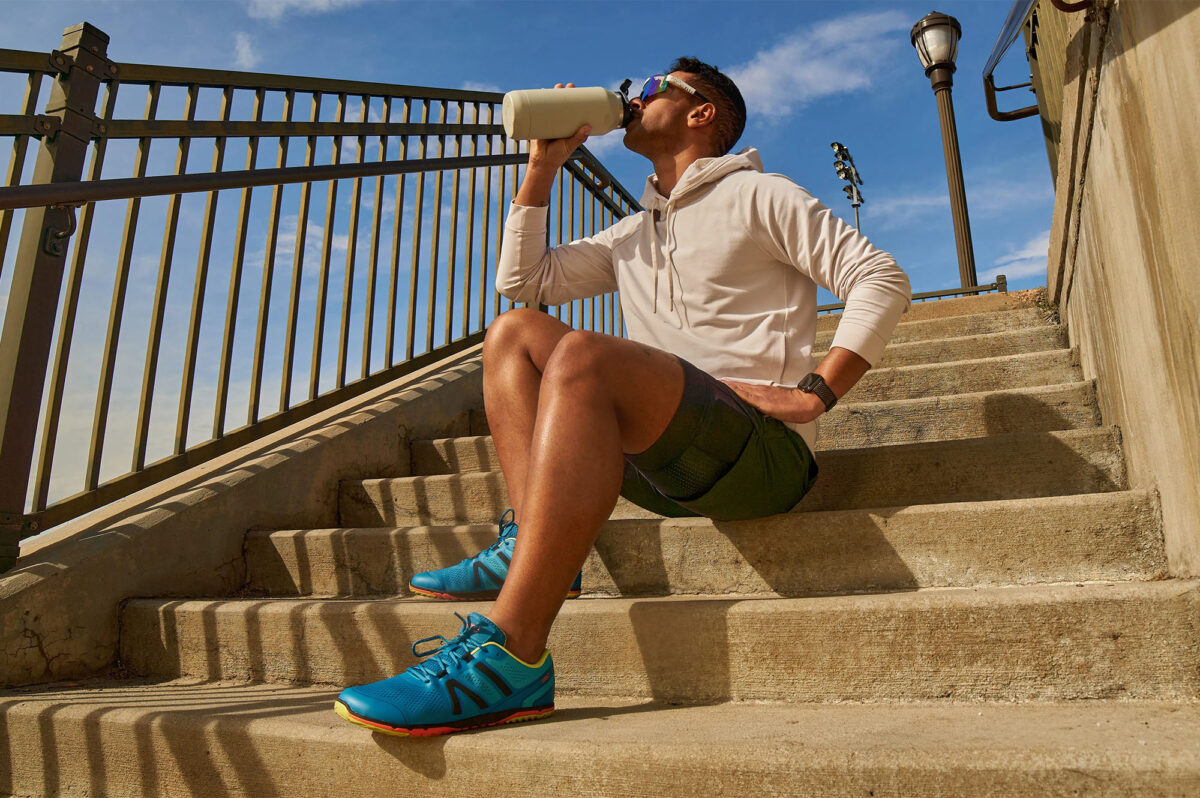Trying out Xero’s HFS II shoe was my first foray into the barefoot shoe movement. Barefoot shoes are characterized by minimalist design and a zero heel drop. This means there’s no difference in the sole height between the heel and forefoot, which simulates running barefoot.
The average heel drop for a running shoe is 10mm, with the heel being higher than the forefoot. These may sound like running nerd details, but if you try zero heel drop shoes, you will immediately become more aware of the ground beneath your feet.
Xero has patented a sole called FeelTrue, which “lets you safely Feel The World, protecting your foot while giving your brain the feedback and stimulation your brain wants,” according to its website. The idea is that you’ll have a more natural running gait and strengthen your feet, which makes you less prone to running injuries.

Xero materials and fit
The first thing I noticed about the Xero HFS II was its cuteness. I tried the ombre green and blue Reflecting Pool color. I like the shoe’s flat silhouette, without a big cushy wedge.
Next, I noticed it was the lightest weight running shoe I’ve ever tried. Without that padding, it weighs almost nothing. The sole is also extremely flexible. A wide toe box lets your toes splay out naturally — like running barefoot. The grippy soles are based on tire treads. And many of Xero’s running shoes are made from vegan materials.
The HFS II were comfortable as soon as I put them on. My first time out in the HFS II, I ran three miles. Yes, I could really feel the ground. Maybe more than I wanted.

Transition period
After my first run in the HFS II, I researched zero drop shoes and learned that running experts advise a transition period. People are split on the pros and cons of zero drop shoes. Depending on who you ask, this type of shoe can be life-changing. Read more about the pros and cons here.
If you decide to try zero drop shoes, experts say you should start with a very short run (about half a mile) and slowly work up. Since I am training for longer runs, I wasn’t willing to do this right now. Apparently, this is a common problem with changing over to zero drop.
According to fitness trainer Eric Plevin of Fulcrum Fitness in Portland, Oregon, “Given the need for a phased adaptation period, individuals unwilling to patiently revise their training regimen may encounter discomfort or injury risks.” So you’ll have the most success if you patiently increase your distance little by little.

Other uses of Xero HFS II
Despite my unwillingness to commit to being a zero drop runner, at least for now, I’ve been wearing the HFS II a lot for other activities. They’ve become my favorite shoes for the gym. Without all the padding, they make me feel nimbler for doing lateral moves, agility ladders, and box jumps. I also liked them for my first try at pickleball.
Overall, the Xero HFS II is a very attractive and comfortable shoe. If you’re ready to venture into the zero drop world, these are a good place to start. And they come with a 5,000-mile sole warranty!

Writer received a free sample from Xero for review.
